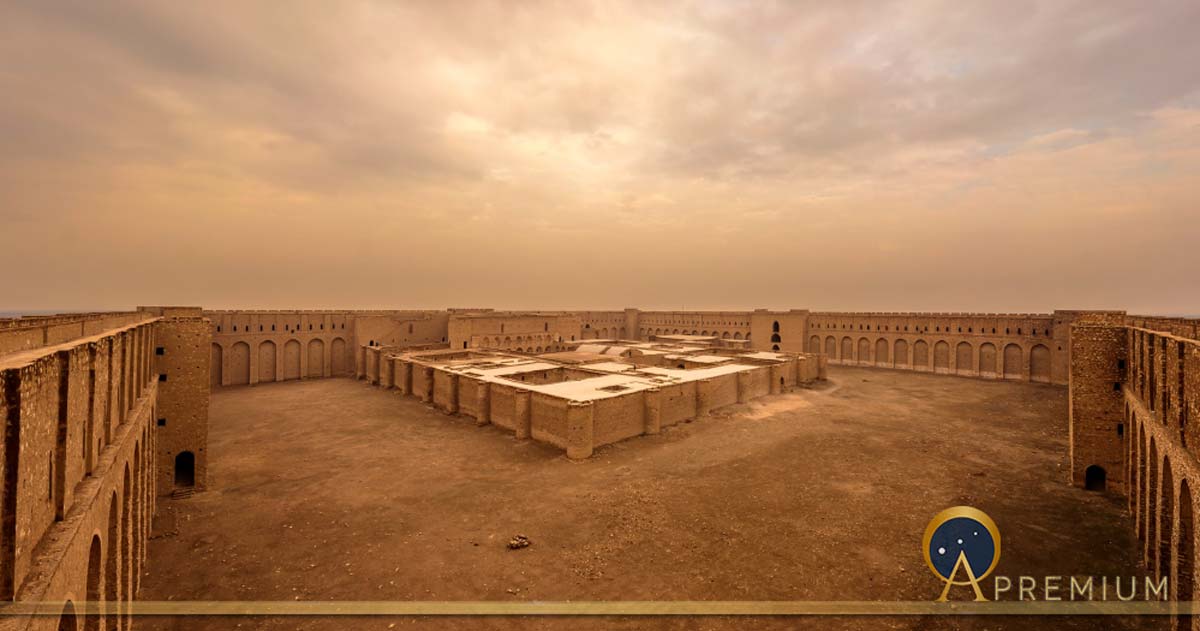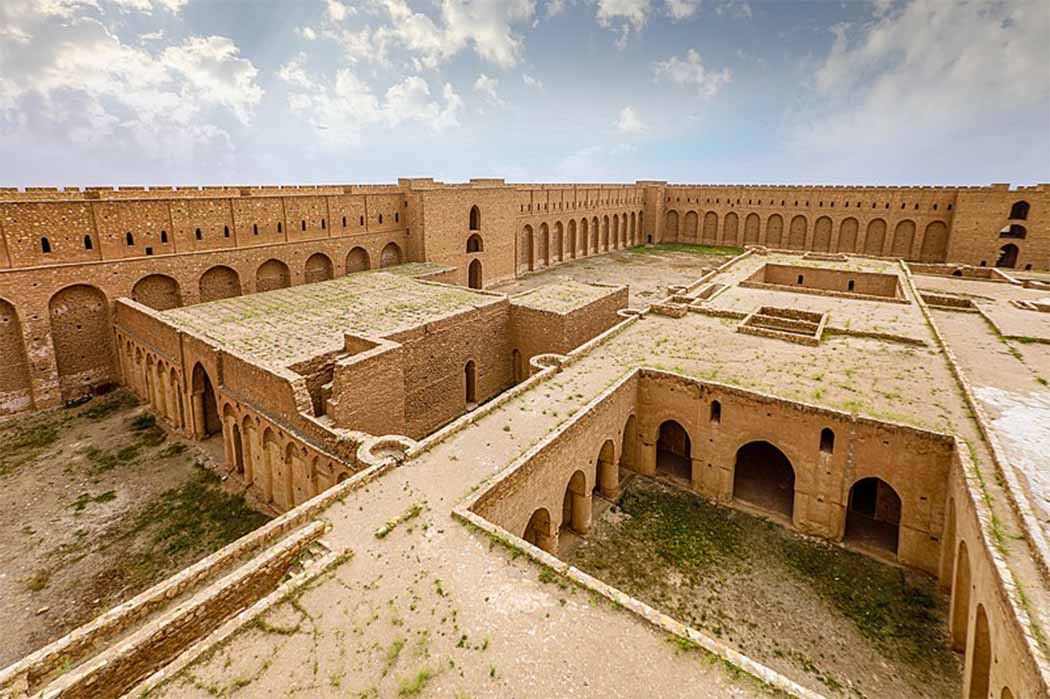The Abbasid Dynasty’s Architectural Legacy: Ukhaidir and Samarra


The Abbasid Dynasty, founded by Abu al-Abbas as-Saffah in 750 AD, marked a significant transition in the Islamic world. It succeeded the Umayyad Caliphate and shifted the Islamic capital from Damascus (Syria) to the newly established city of Baghdad (Iraq). Under the Abbasids, the Islamic empire experienced a flourishing period of intellectual and cultural growth, often referred to as the “Islamic Golden Age.” This era was characterized by advances in various fields, including science, mathematics, astronomy, philosophy, literature and of course architecture.

Al-Ukhaidir Fortress near Karbala (Mustafa Hamzah Almosawy/ CC BY-SA 4.0)
Ukhaidir Fortress
In the vast expanse of Iraq’s arid landscape, approximately 100 miles (160 kilometers) southwest of Baghdad, the Ukhaidir Fortress, also known as Qasr al-Ukhaidir, stands as a sentinel of the past. The origins of this massive extended construction is shrouded in mystery. According to the Muslim Heritage site, it can be dated to anywhere from 720 to 800 AD, which poses a problem as that would include 30 years within the Umayyad Dynasty, predecessor of the Abbasid Dynasty, who gained power in 750 AD. The semi-circular arches point to Umayyad construction, while the pointed arches are Abbasid.

One of the theories is that the Ukhaidir Fortress was built in 775 AD by the first Abbasid Caliph, As-Saffah’s nephew Isa ibn Musa. As-Saffah himself resided in the Persian city of Anbar, 45 miles (72 kilometers) west of Baghdad and his successor Al-Mansur lived in Baghdad, so they did not personally inhabit Ukhaidir. Another theory proposes it was built by Isa Ibn Ali ibn Abdullah, another nephew of Caliph Al-Mansur. The Fortress served as a safe haven for travellers and caravans, along important trade routes. It clearly had a defensive purpose as indicated by structures such as the arrow slits, served by vaulted wall walks. One of the most striking features of the Fortress is its massive circular towers, which rise dramatically from the surrounding desert. These towers, with their unique architectural design, make Ukhaidir distinct from other structures of its time. The towers not only provided a sense of grandeur but also served practical purposes, such as defence and surveillance of the surrounding area. Gateways flank the quarter round towers of the walled Fortress.
However, the Ukhaidir Fortress’ significance transcends its utilitarian function. The labyrinth palace complex consists of series of functional units; the great hall, a mosque, a court of honour, audience halls and four domestic compounds called Bayts.